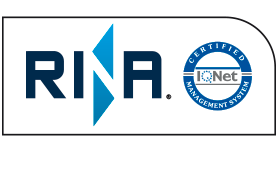Why use INNOVCABLE MOBILE CABLES
Considerations for why to use Innovcable mobile cables
Innovcable Mobile Cables
Considerations for why to use Innovcable mobile cables
Cables for mobile applications follow some factors to achieve success in the application.
First start with the problem. With the introduction of industry 3.0 in the mid-1970s, the automation process intensified and machines became more malleable and flexible, requiring products and processes that meet these demands.
One of them is equipment that moves constantly and requires the transmission of signals, data and energy reliably and with high durability in processes of constant movement (e.g. robots, cable chains and cranes), without interruptions or stops in the process. factory.
Common cables no longer meet these new needs and a new range of cables was created to meet these requirements.
Innovcable® applied in-depth knowledge and developed products following the following paths:
1-) Search
2-) Constant and differentiated tests
3-) Validation
4-) Development of new compounds and applied materials
5-) New and differentiated machines in the manufacturing process
6-) New cable construction design
7-) Know kow of new production processes
The interesting thing is that these innovations required an interesting learning curve that elevated and differentiated an entire new value chain, creating a fantastic range of new products to meet this new need.
Innovcable® found a technological path that solved and met or exceeded the needs of its customers.
THE “Corkscrew” EFFECT
One of the main problems that common cables present in these applications is the effect popularly known as the “Corkscrew Effect”, it is called this way because the cable breaks in the outer jacket due to the constant twisting around its own axis and the forces applied at the center of the cable. As common cables are not built to serve this purpose, they tear easily, causing severe inconvenience for users, such as machine downtime, among others.
CABLE CONSTRUCTION
The so-called multi-cables (several conductors grouped into a single cable) in the case of mobile cables must follow some construction and application rules.
REMEMBER THAT FOR EACH APPLICATION OR NEED THERE IS THE CORRECT CABLE TO BE APPLIED. CONSULT OUR TECHNICIANS OR ENGINEERS FOR THE BEST GUIDANCE.
1-) Layered twisted cables – Although some manufacturers discard this type of twist in their cables, our knowledge and field tests and validation have shown that it is efficient in some types of applications to the detriment of other constructions (Beams), however It is not just any layer twist, there are rules and know-how in this type of construction, such as twist steps, double directions, direction of application (right or left), compounds used, etc.
2-) Cables twisted into bundles – This type of construction stood out compared to twisting in layers in some types of applications, obtaining better performance and results. The principles taken into account in this process are:
a-) Short torsion pitch,
b-) Tension-proof central element
c-) Gathering of drivers in packages around the central element
d-) External cover with reinforced padding
3-) Cables requiring EMI protection (shielding) must have their shielding constructed at an optimized angle, using an intermediate layer with reinforced padding and the same with the external layer.
All these elements refer to the basic construction of the cables, but several other factors have a radical impact on performance, such as the compounds used, diameter and quality of the wires used, among others.
BREAKING OF WIRES IN SYSTEMS FOR EMC PROTECTION (SHIELDING) AND IN CONDUCTORS.
Shielded cables for mobile applications must resist and literally follow their movement without causing internal friction that could cause breakage of the mesh and conductors, in addition to a problem that is difficult to identify when it occurs in the mesh, it affects the performance of the equipment, putting even the security.
To minimize these harmful effects on the cable's durability, it is necessary to use thin wires, with good elasticity and that continue to meet the electrical requirements stipulated by the standards.
Open meshes that are not at the correct angle result in premature breakage and their movement must be controlled, that is, they must not move randomly, they must follow the movement of the conductors, which is a helpful factor in protecting the entire assembly.
Innovcable® uses its expertise to mitigate and resolve such issues, optimizing the construction of its cables using technology that adds great value to its customers.
Another issue to consider when using the cable is whether the mesh is adhered between the inner and outer layers. If, during stripping, the mesh is easy to separate, this is an indication that problems may occur with the mesh (friction) ( depends on cable type and application)
ABRASION AND BREAKDOWN OF THE COATING
Innovcable® offers a range of compounds, each with a characteristic, both for the insulators and for the internal and external layers that considerably increase the cable's durability. Always analyze the time of use, how many flexions you will perform during the period, the torsion requirement, the application, internal or external use, among other factors in order to minimize the rupture of the veins and layers and obtain the best result and performance in the its application.
REINFORCED EXTRUSION OF COATINGS.
Do not use cables that do not meet the reinforced extrusion protection system, this type of extrusion is more expensive and therefore not used by most manufacturers, as it implies an increase in production equipment costs; techniques, knowledge and differentiated materials that they do not have. Complete filling of the cable and its interstices is necessary in this type of product and can only be achieved with a pressure system allowing a defined longitudinal movement.
THE DIFFERENTIALS OF INNOVCABLE CABLES®:
1-) Special central element for each application (when applicable)
2-) Braiding in bundles or in double direction and correct orientation.
3-) Inner cover with reinforced padding
4-) Closed loop
5-) Optimized angle.
5-) Extruded outer cover with padding.
6-) Compounds specifically developed for mobile applications.
7-) Thin and flexible strands





